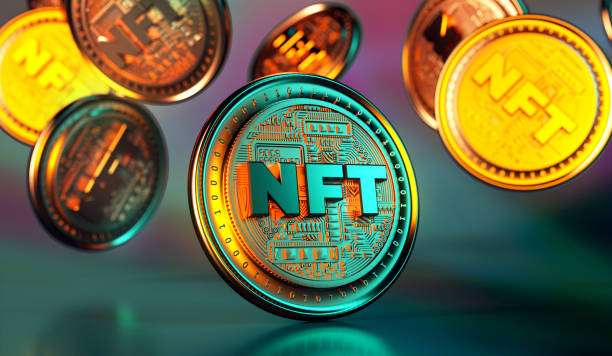
Introduction
Blockchain technology has brought about innovative digital assets, with Non-Fungible Tokens (NFTs) and cryptocurrencies standing out as the most popular. While both leverage blockchain, they serve entirely different purposes and cater to distinct markets. This article explores the key differences between NFTs and cryptocurrencies, focusing on their use cases and market potential.
What Are NFTs?
Definition
Non-Fungible Tokens (NFTs) are unique digital assets representing ownership of a specific item or content, such as artwork, music, videos, or virtual real estate.
Key Characteristics:
- Uniqueness: Each NFT is one-of-a-kind, with its own metadata and blockchain identifier.
- Non-Fungibility: NFTs cannot be exchanged on a one-to-one basis, as each has a distinct value.
- Ownership Proof: Blockchain ensures transparency and verifiable ownership.
Popular NFT Use Cases:
- Digital Art: Artists can sell their creations as NFTs on platforms like OpenSea or Rarible.
- Gaming: Games like Axie Infinity and The Sandbox use NFTs for in-game assets.
- Virtual Real Estate: Metaverse platforms like Decentraland allow users to buy and sell virtual land as NFTs.
- Music and Media: Musicians and creators mint exclusive content as NFTs, offering ownership and royalties.
What Are Cryptocurrencies?
Definition
Cryptocurrencies are digital currencies that use blockchain technology for secure, decentralized transactions. Examples include Bitcoin (BTC), Ethereum (ETH), and Litecoin (LTC).
Key Characteristics:
- Fungibility: Cryptocurrencies are interchangeable, meaning one Bitcoin holds the same value as another Bitcoin.
- Medium of Exchange: Cryptocurrencies are designed for buying goods, services, or other assets.
- Decentralized Nature: Operate without central authorities, relying on peer-to-peer networks.
Popular Cryptocurrency Use Cases:
- Payment Systems: Bitcoin and Litecoin are used for fast, secure payments.
- Smart Contracts: Ethereum enables decentralized applications (DApps) through programmable contracts.
- Store of Value: Bitcoin is often compared to gold for its potential to retain value over time.
Key Differences Between NFTs and Cryptocurrencies
| Aspect | NFTs | Cryptocurrencies |
|---|---|---|
| Fungibility | Non-fungible (unique assets) | Fungible (identical units) |
| Use Case | Ownership of unique items (art, music, etc.) | Currency and value transfer |
| Value Determination | Based on rarity and demand | Based on market supply and demand |
| Divisibility | Indivisible (cannot split an NFT) | Divisible (e.g., Bitcoin up to 8 decimals) |
| Purpose | Digital ownership and rights | Payments, investments, and smart contracts |
| Market Platforms | NFT marketplaces (e.g., OpenSea, Rarible) | Crypto exchanges (e.g., Binance, Coinbase) |
NFT Market Potential
Rapid Growth in Digital Art
The global NFT market surged to billions of dollars in 2022, fueled by interest in digital collectibles and art. Platforms like Beeple’s Everydays: The First 5000 Days highlighted NFT’s potential to revolutionize art ownership.
Metaverse Integration
NFTs are critical to metaverse economies, enabling users to buy and sell virtual assets with real-world value.
Challenges:
- Speculation Risks: Market volatility can lead to inflated prices.
- Environmental Impact: Energy-intensive minting processes raise sustainability concerns.
Cryptocurrency Market Potential
Global Payment Solutions
Cryptocurrencies are transforming payment systems with lower fees and faster cross-border transactions compared to traditional banking.
Decentralized Finance (DeFi):
Cryptocurrencies power DeFi platforms, allowing users to borrow, lend, and trade without intermediaries.
Challenges:
- Regulatory Hurdles: Governments are still defining crypto-related regulations.
- Volatility: Prices can fluctuate dramatically, impacting adoption.
How NFTs and Cryptocurrencies Intersect
NFTs Depend on Cryptocurrencies
NFTs are typically bought and sold using cryptocurrencies like Ethereum (ETH). Blockchain networks host both NFTs and tokens, intertwining their ecosystems.
Smart Contracts Enable NFTs
Cryptocurrencies like Ethereum enable the creation of NFTs through smart contracts, automating ownership transfers and royalties.
Investment Opportunities:
Both NFTs and cryptocurrencies offer speculative investment potential, but their risk and return profiles differ significantly.
Which is Right for You?
Choose NFTs If You Want:
- To own or trade unique digital assets like art or collectibles.
- To participate in emerging metaverse economies.
Choose Cryptocurrencies If You Want:
- A digital medium of exchange or store of value.
- To invest in decentralized finance (DeFi) and blockchain projects.
Conclusion
While NFTs and cryptocurrencies share blockchain technology, their purposes and use cases vary widely. NFTs focus on unique ownership and creative assets, while cryptocurrencies serve as digital money for transactions and investments. Understanding their differences can help you decide which aligns with your goals—whether you’re exploring the metaverse or diversifying your financial portfolio.
Read More…
FAQs
- Are NFTs considered cryptocurrencies?
No, NFTs are digital assets representing ownership, while cryptocurrencies are fungible tokens used for payments and investments. - Which is more profitable: NFTs or cryptocurrencies?
It depends on market trends, demand, and investment strategy. Cryptocurrencies typically offer broader utility, while NFTs are driven by rarity and creativity. - Can I buy NFTs without cryptocurrency?
Most NFTs are purchased using cryptocurrencies like Ethereum, though some platforms now accept fiat payments. - Are NFTs a good investment?
NFTs can be lucrative but are highly speculative and risky. Research thoroughly before investing. - What’s the environmental impact of NFTs vs. cryptocurrencies?
Both can be energy-intensive, but newer blockchain solutions (e.g., Ethereum 2.0) are addressing sustainability concerns. - AIPRM
